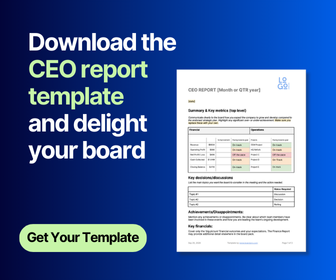“Our board gets too much, and it’s mostly the wrong stuff.” That is a common refrain in conversations many Australasian directors have about their board meeting materials. Our research confirms that this is also a widely held concern in other parts of the world. For example, a report just released in the UK, concluded that 64% of a wide cross-section of boards had to work on board packs that did not support focused conversations about priority issues (1).
So, why do many board packs fall short?
- Board packs are too big. They contain more material than directors can reasonably be expected to review and absorb in preparation for a board meeting. This is partly a consequence of legislation and regulation that has increased board compliance obligations and performance expectations. However, the trend to digital board packs has added to the problem. Without the hassle of copying, printing, and posting hard-copy board meeting materials there is no natural counter to management’s incentive to ensure their board is ‘fully informed’. Given the reading time required, and the increasing complexity of the issues boards need to get on top of, it is increasingly likely that directors arriving at a board meeting will not have fully processed what they have been given. Increasingly, directors feel forced to be selective in what they pay attention to even though such pragmatism creates risk. Should they find their actions and decisions subject to judicial review, they will likely find weight is attached to every last word in the board pack.
- Much of their content lacks relevance. Perhaps the most common complaint from directors is that too much of the board pack content is operational detail. Ironically, managers who put this content forward then complain about boards micromanaging and meddling in operations. The bigger problem is that the board’s attention is distracted away from matters it has not or cannot delegate to management, to those it has. Another common problem is the high proportion of many board packs that are just ‘for information’. Much of that so-called information is ‘nice to know’ in the board’s hands rather than ‘need to know’. The problem starts with performance measures that focus on past activity.
- Too much board reporting is backward looking. A board can only influence what has not yet happened. Strategic and generative thinking, policy making, and risk characterisation – these are key board tasks and inherently future facing. Contrarily, much of the content of a typical board pack describes what has happened when it is no longer possible to influence the outcome. (2) Boards, of course, do need to monitor organisational achievement to check performance is on track. There are also lessons to be learned from experience. The problem is that too little of this backward looking reporting has an evaluative dimension that would capitalise on that opportunity.
- There is too much data and too little information. It is frustrating to directors to be faced with a ‘data dump’ with precious little analysis and insight. The absence of an explanation of the relevance and implications of what management is putting in front of the board forces directors to pose a whole lot of questions that should not be necessary. For example, ‘Why are you giving us this? What do you think that data is telling us? What are its implications? What options does it open up for us? What threats does it suggest are on the horizon? What are the assumptions on which this recommendation is based?’
- The purpose of reports is not clear. As they review the board pack content ahead of a meeting, directors often find themselves puzzling about the purpose of a report or proposal. Without a pointer to the reason a document is in the board pack there is no clear starting point for their preparation. If there is no recommendation at the head of the paper the action expected of the board is not clear. Also, there is often no context offered that would explain where the paper is kicking off from (e.g. a policy or past decision) and why the issue has a level of materiality that justifies the board’s attention.
- Papers are poorly written. We can include a number of shortcomings here. For example, too many board papers do not tell a story. They lack a narrative structure that drives from a problem definition to an analysis, to a review of options, and finally a conclusion and recommendation. There is a wide but mistaken belief that presenting board papers as a series of bullet points will somehow make the paper shorter and easier to understand. Neuroscience tells us the opposite is more likely. It is also common to see technical language, jargon and acronyms that make the material impenetrable to many members of the board. Excessive use of unexplained adjectives (‘strategic’, ‘strong’, ‘promising’, etc.) that are likely to mean different things to different people in the meeting is another problem.
- Board pack content is poorly presented. Inconsistent formatting reflecting the preferences and idiosyncrasies of individual authors makes progress through a board pack more difficult. We see small font content squashed onto the page with few headings to expose structure and too little white space to break it up. This might marginally reduce the number of pages but greatly increases reading difficulty. Documents conceived in paper form often do not transfer well to small tablet screens (spreadsheets especially). The trend in some organisations to dress board packs up with infographics and garish colours detracts from rather than enhances understanding. Inadequate indexing and pagination make it difficult – particularly in digital form - to navigate through the pack. Basic proof reading errors are not only a distraction but reduce confidence in the content and the author.
The upshot of these shortcomings is serious because:
- Board meeting time is not being put to its most productive use. Too much of a board meeting has to be spent trying to figure out what are the main issues (if any) for discussion and decision.
- To the extent directors are engaging with their board packs they are likely skipping over much of the content either because of excessive length or the ‘indigestibility’ of the contents. They are at risk of missing the key points.
- Boards are not having the right conversations – at best they are spectators to management activity (after the fact) at the expense of delivering to the effective direction and control of their organisations. Effective boards work ‘on’ the business not ‘in’ the business
That board packs are widely panned as unfit for purpose underlines a major board performance problem. However, rather than is usually the case - blaming management for board pack deficiencies - boards should be looking to their own culpability. We will pursue that idea in our next blog and offer some ideas on how board pack shortcomings can be fixed.
Download the full white paper
Notes:
(1) Board Intelligence. Effective Board Reporting – the Findings. E-book
(2) Australian Institute of Corporate Directors. What can be done about expanding board packs and information overload? 11 April 2019
Share this
You May Also Like
These Related Stories

How to Solve the 5 Most Common Issues in Board Packs

How to solve the 5 most common issues in board packs


